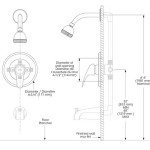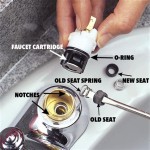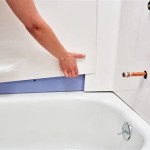Do I Need a Building Permit to Replace Bathtub Surrounding Areas?
Replacing the area surrounding a bathtub, often involving tile, backer board, and sometimes plumbing adjustments, is a common bathroom renovation project. A critical question homeowners face before undertaking this task is whether a building permit is required. The answer, unfortunately, isn't a simple yes or no. Regulations vary significantly depending on the location and the scope of the project.
Building codes are established to ensure the safety and structural integrity of buildings. Plumbing and structural modifications often fall under these codes, necessitating permits to guarantee work is completed to the required standards. Replacing bathtub surrounds can involve alterations to these systems, triggering the need for a permit. For example, replacing a damaged section of wall behind the bathtub might require structural repairs, while moving the showerhead could involve plumbing changes.
The primary factor determining permit requirements is the location of the property. Building codes are typically established and enforced at the local level, meaning city or county ordinances dictate the rules. Some jurisdictions require permits for any work impacting plumbing or structural elements, regardless of the scale. Others may have exemptions for minor repairs or cosmetic changes.
The complexity of the project also influences permit requirements. A simple tile replacement directly onto existing, undamaged backer board might not necessitate a permit in some areas. However, if the project involves replacing the backer board, altering plumbing lines, moving electrical fixtures, or modifying the wall structure, a permit is more likely to be mandatory.
Replacing a bathtub surround often involves removing existing tile and backer board. This demolition process has the potential to uncover hidden problems, like water damage, mold, or deteriorated framing. Addressing these issues often requires further repairs, which might trigger the need for a permit, even if the initial plan didn't necessitate one. It's crucial to be prepared for unforeseen complications and understand the permitting process in advance.
Working without a required permit can have significant consequences. Inspections, typically part of the permit process, ensure the work meets code requirements and safeguards against potential hazards. Without a permit, these crucial inspections don't occur, potentially leaving homeowners vulnerable to safety issues and future problems.
Beyond safety concerns, unpermitted work can also impact property value and insurability. Discovering unpermitted renovations during a home sale can complicate the transaction, potentially requiring costly rectifications or price reductions. Insurance claims related to plumbing or structural issues might be denied if the work was completed without the necessary permits.
Determining whether a permit is needed for a specific bathtub surround replacement project requires contacting the local building department. Providing details about the project scope, including any planned plumbing or structural modifications, will allow the department to determine the applicability of local codes and permit requirements.
Many local building departments offer online resources and portals to streamline the permit application process. These resources often include permit application forms, fee schedules, and contact information for inspectors. Utilizing these online tools can simplify the process and expedite approvals.
Consulting with a qualified contractor is also highly recommended. Experienced contractors are familiar with local codes and permitting requirements. They can advise on the necessity of a permit and often handle the application process on behalf of the homeowner. This expertise can save time and ensure compliance with local regulations.
While navigating building codes and permit requirements might seem complex, it's a crucial step in ensuring the safety and legality of home renovations. Taking the time to understand local regulations and consult with the appropriate authorities will protect homeowners from potential risks and ensure a successful project outcome.
Ignoring permit requirements can lead to more than just fines. It can create safety hazards, jeopardize insurance coverage, and diminish property value. Understanding local building codes and obtaining the necessary permits is an investment in the safety and long-term value of a home.
The information provided here is for general knowledge and does not constitute legal advice. Regulations vary significantly by location. It is essential to contact the local building department for definitive information regarding permit requirements for specific projects.

Do You Need Permits For Bathroom Remodel What To Know In 2024 Badeloft

Is A Building Permit Required For Renovations

Guide To Bathroom Renovation Or Remodeling Permits And Tips In Victoria

Ask An Architect Do I Need A Permit For This Hlzae

See Permit Requirements Before Springing To Action

Building Permit Plans Portland Gov

5 Building Codes For The Bathroom Doityourself Com

Bathroom Remodel Checklist Tips Mr Handyman

How To Convert Tub Walk In Shower Angi

How Long Does A Bathroom Remodel Take








